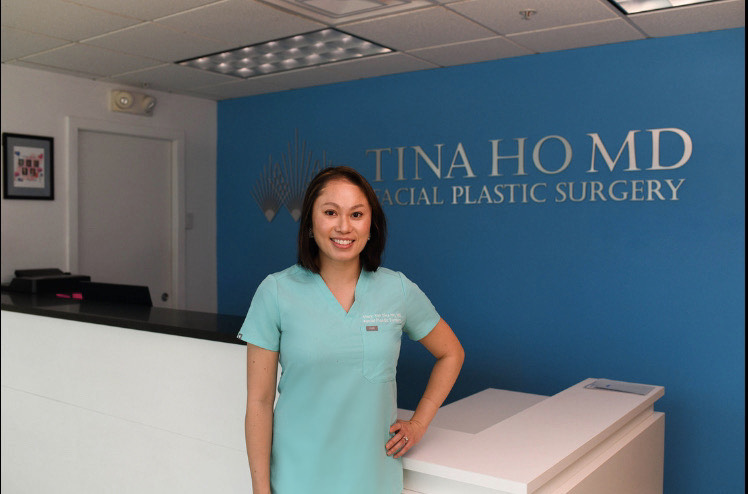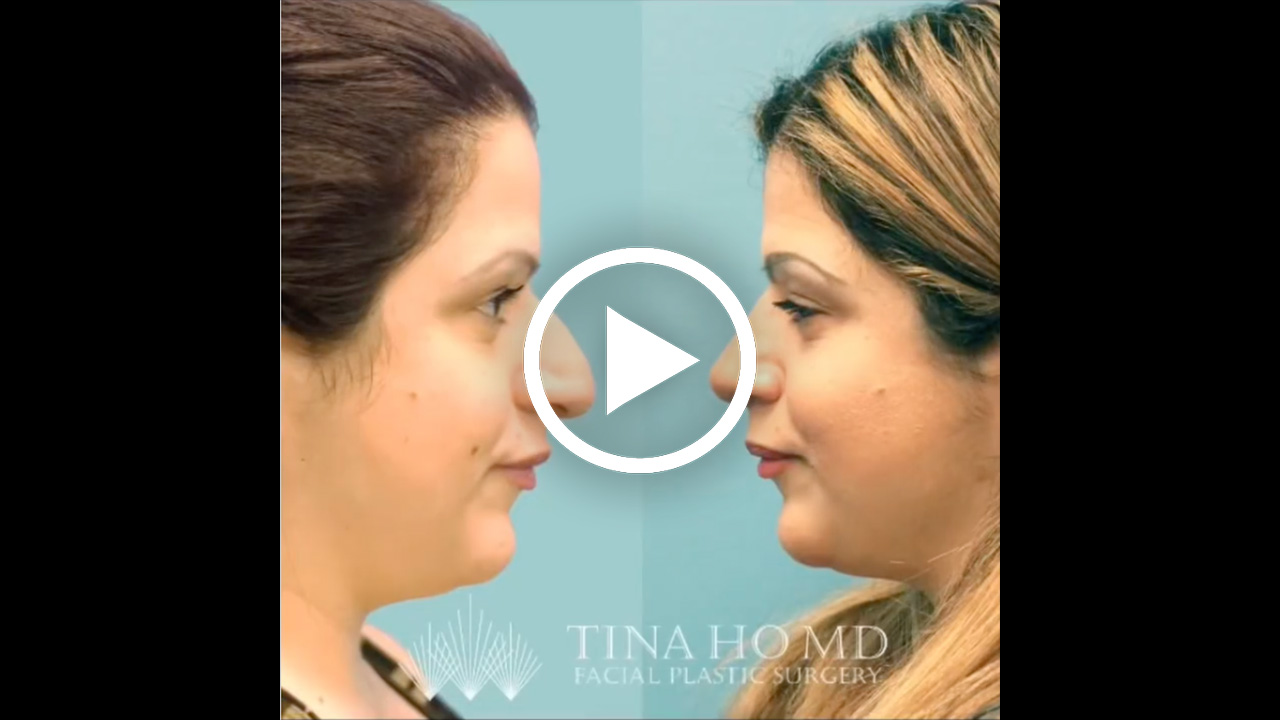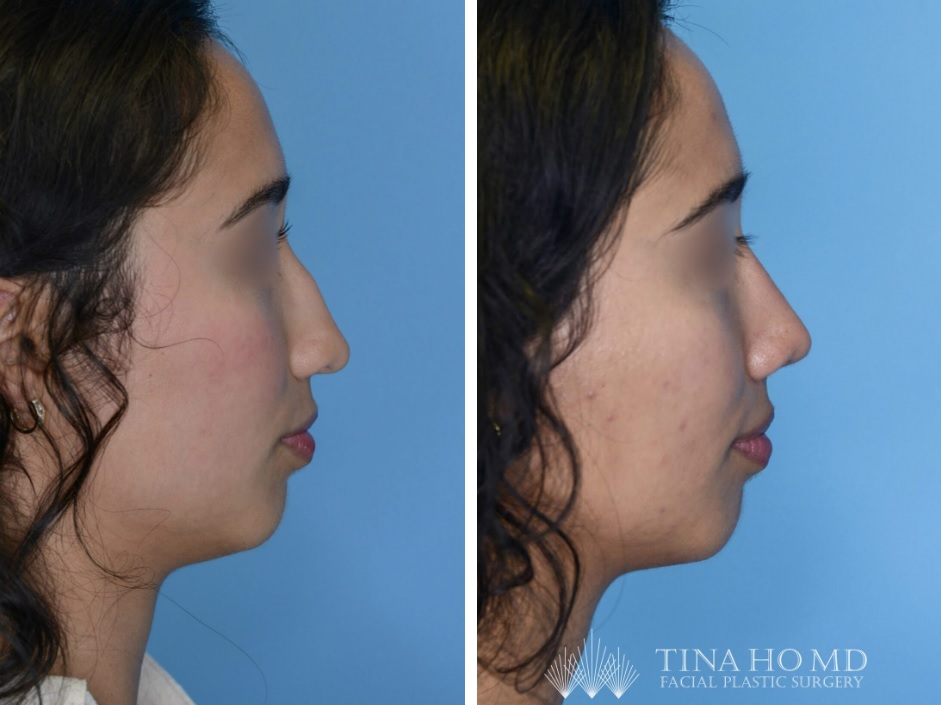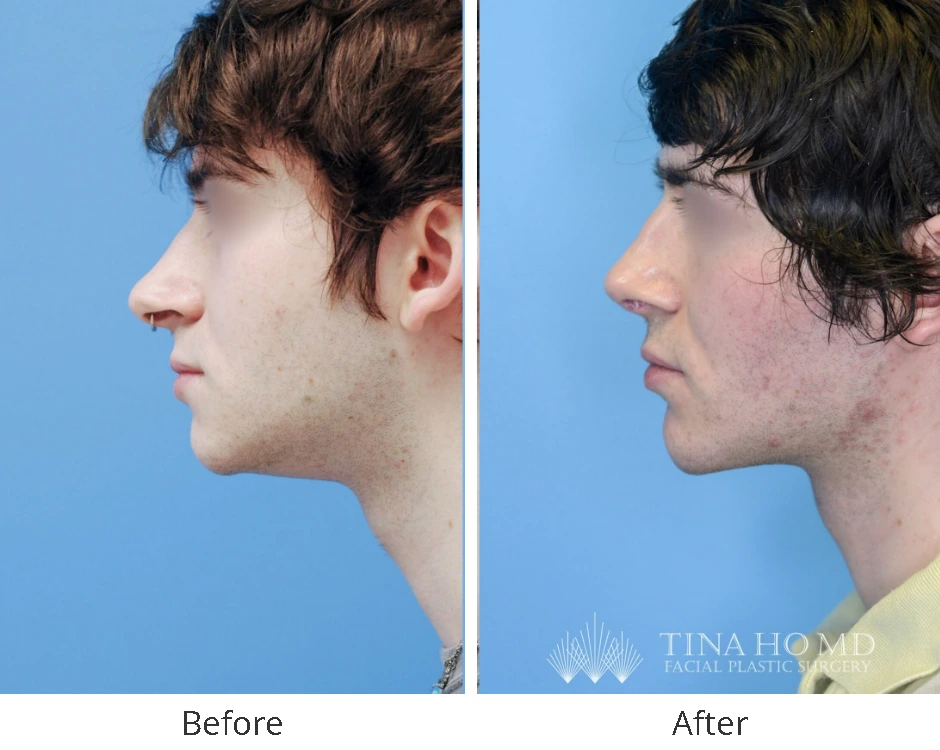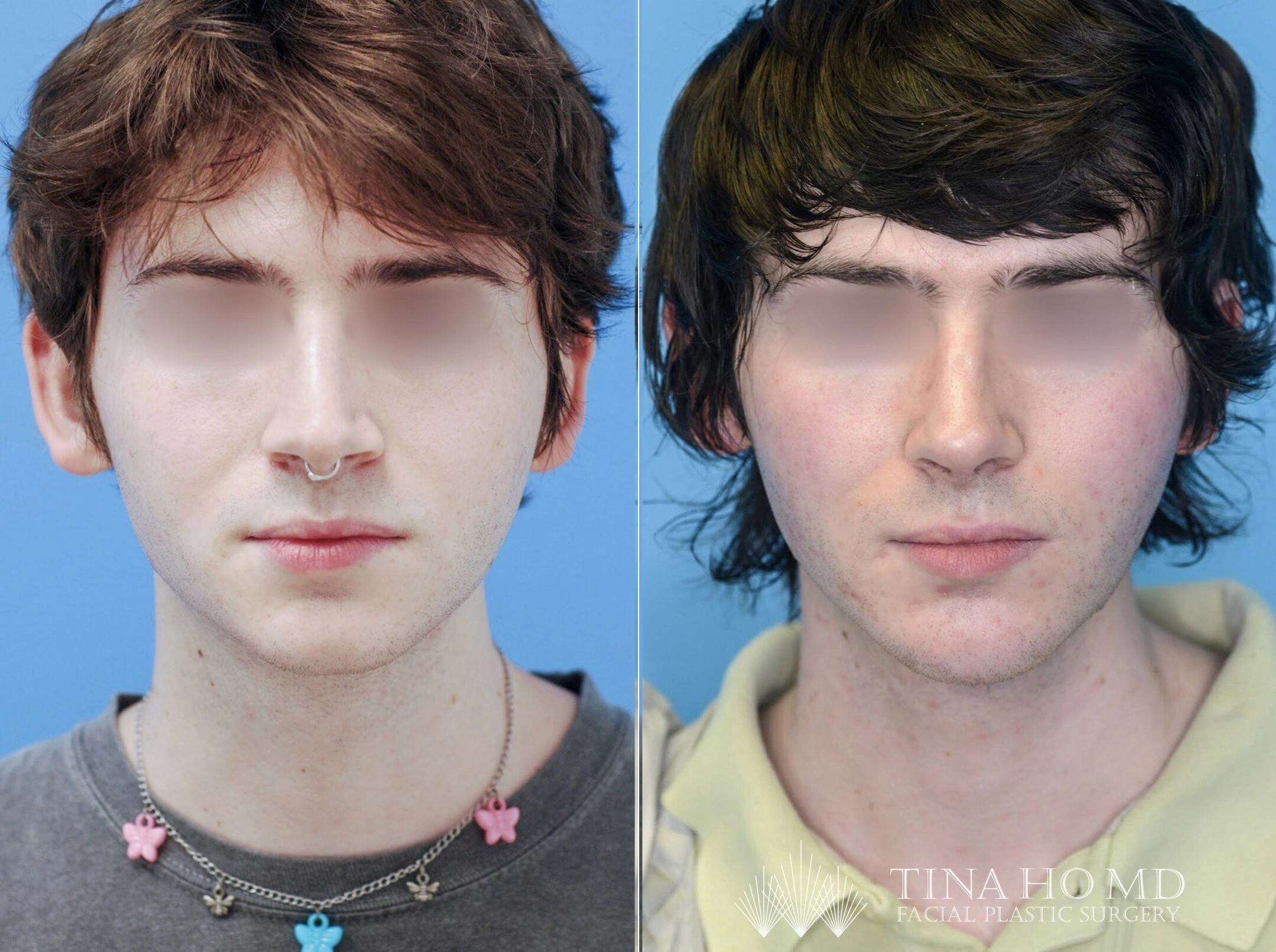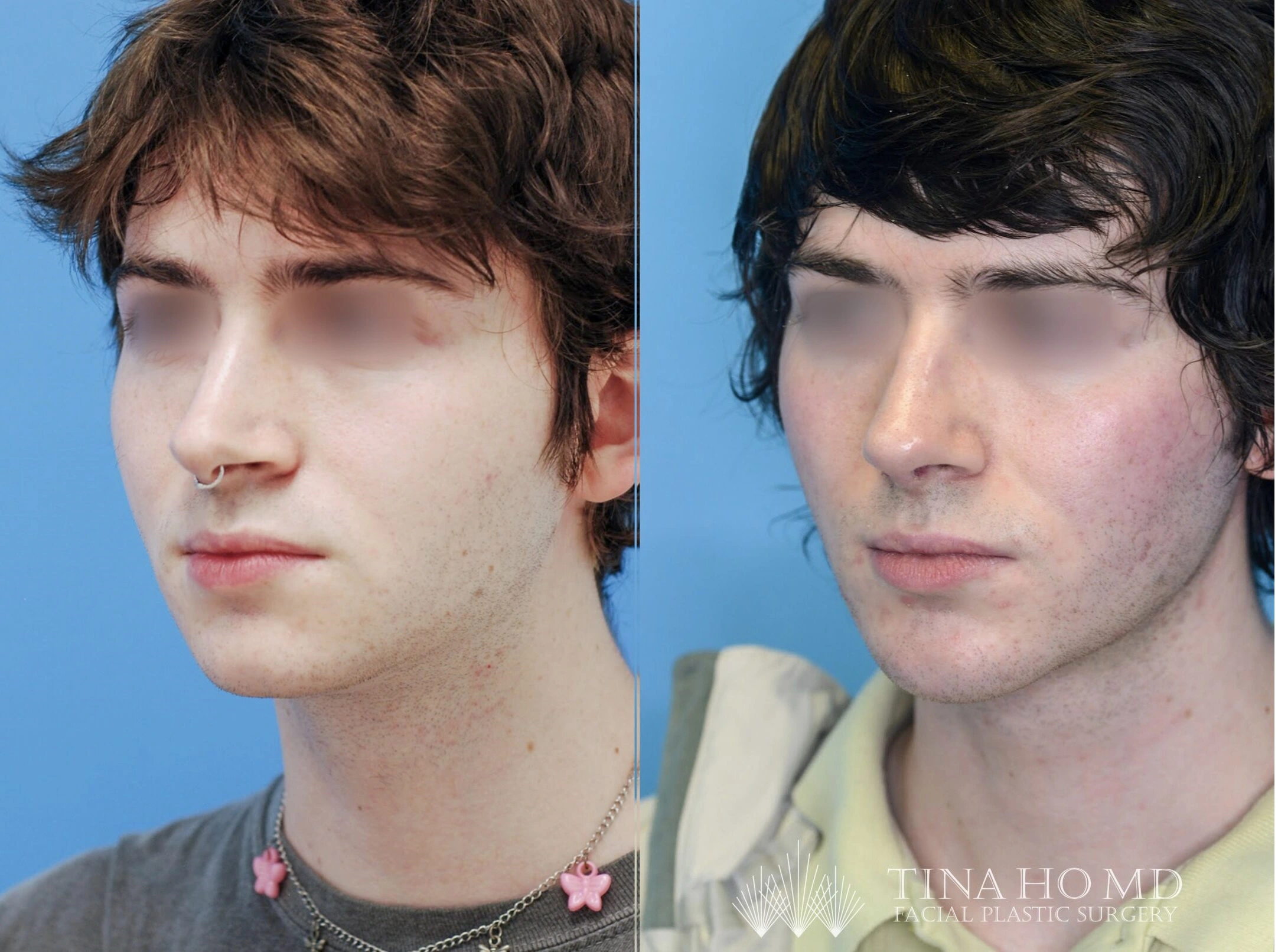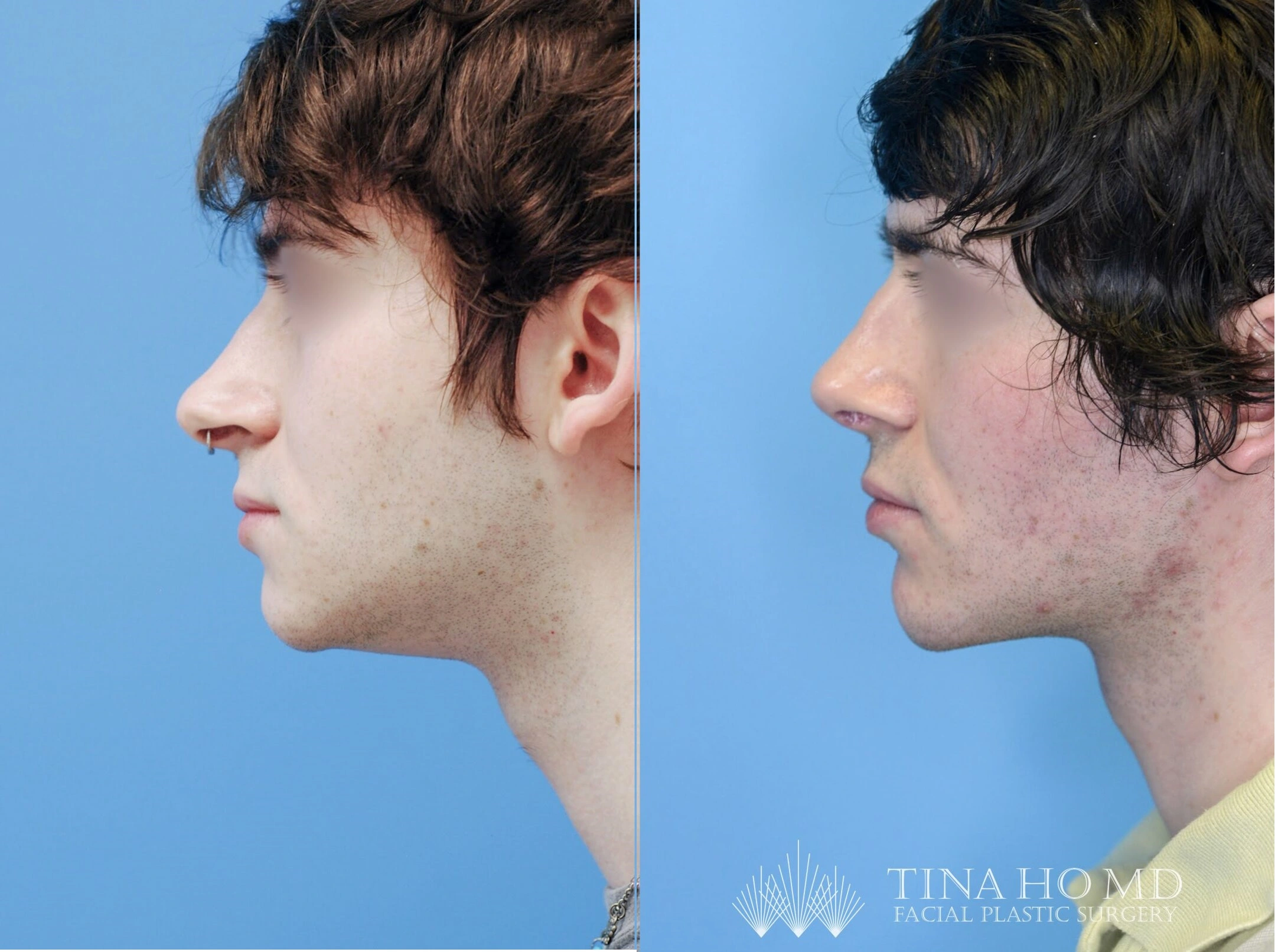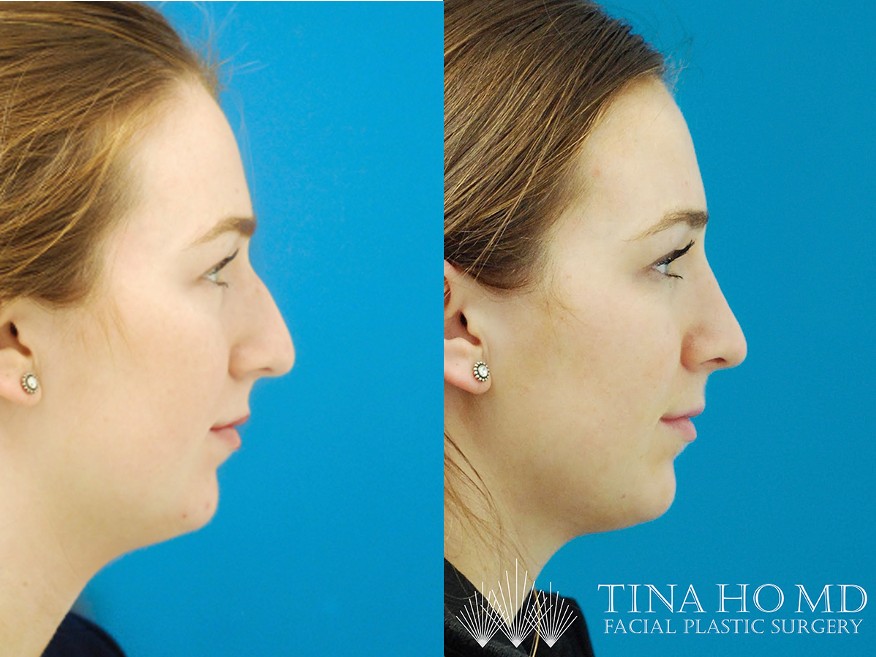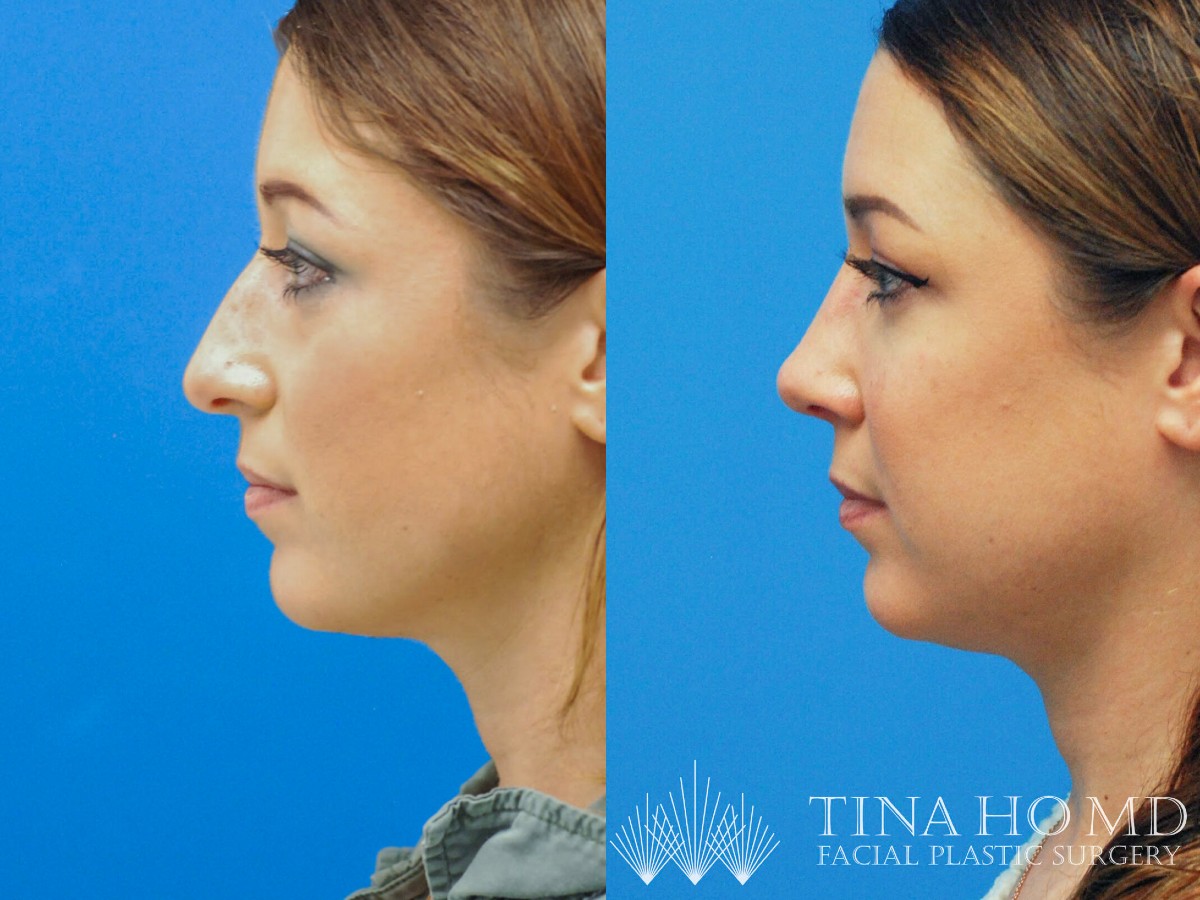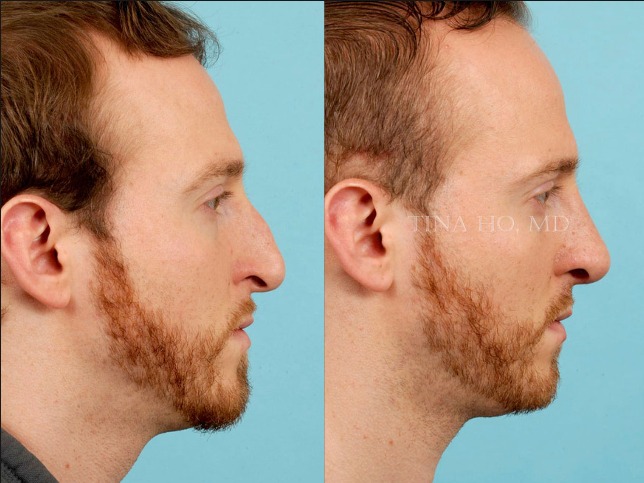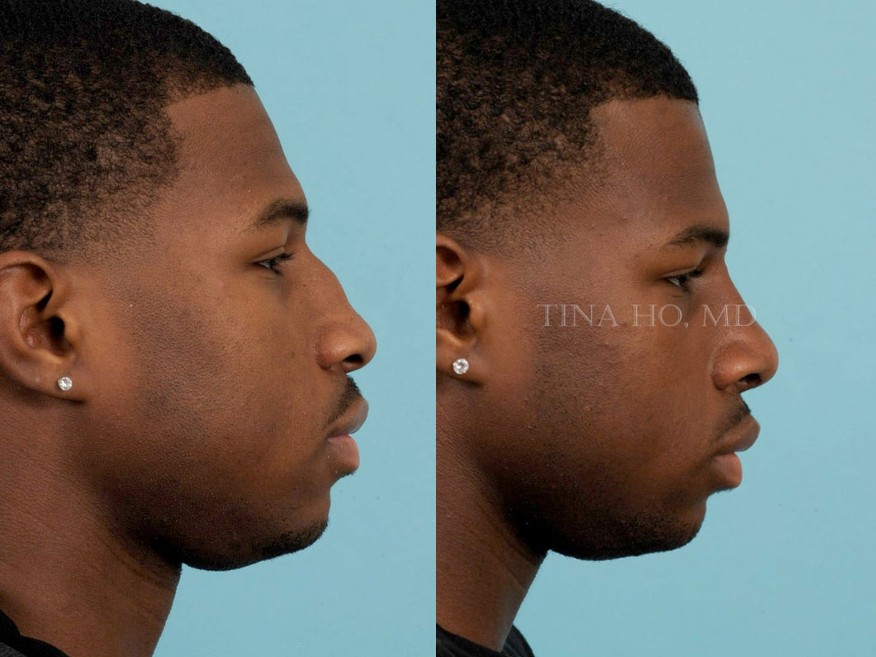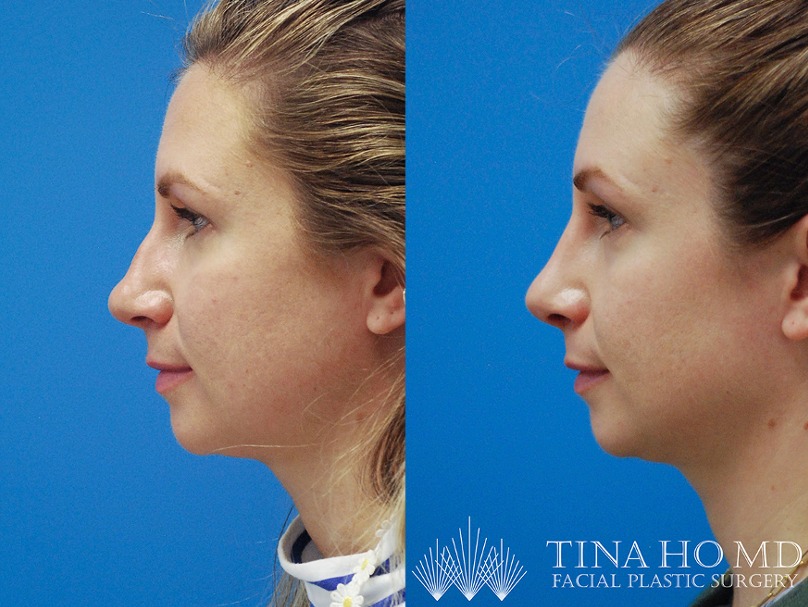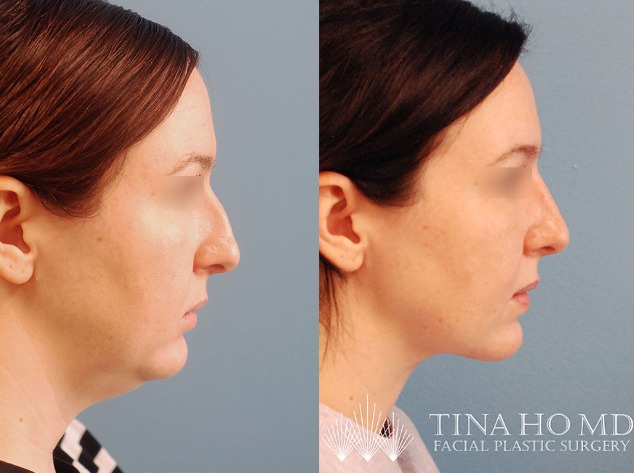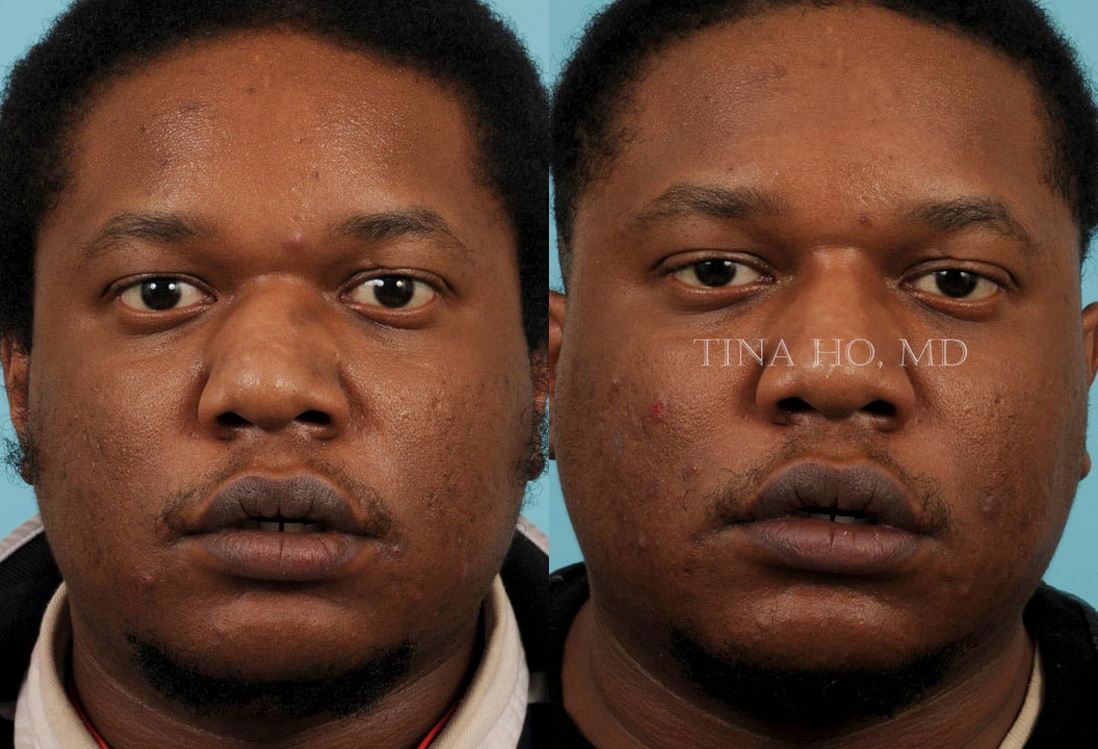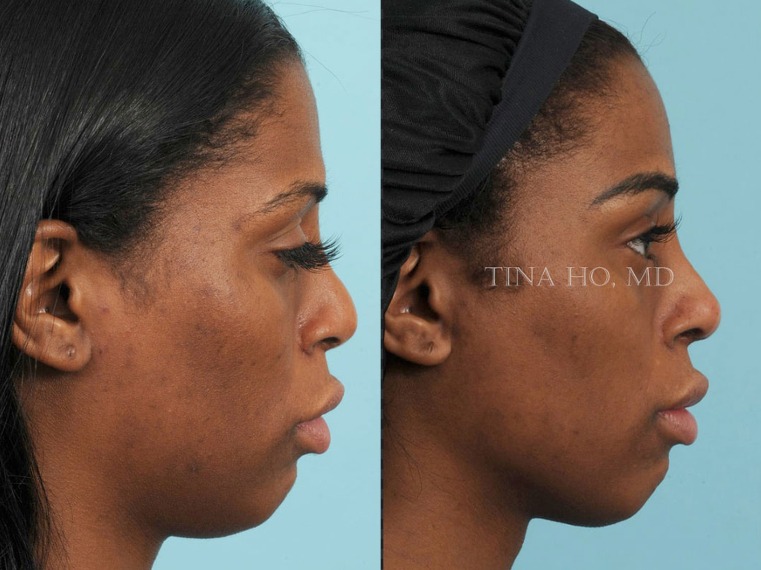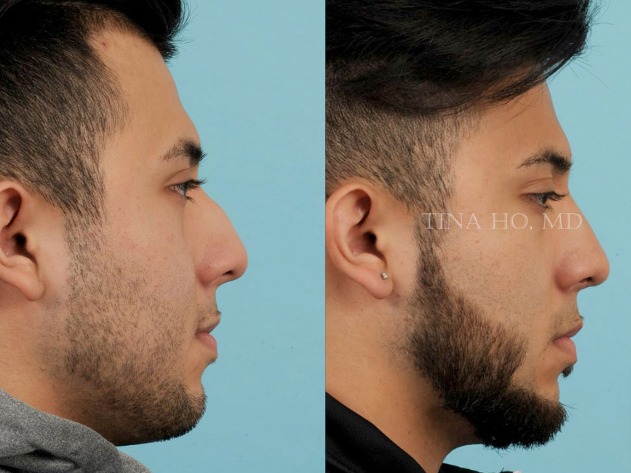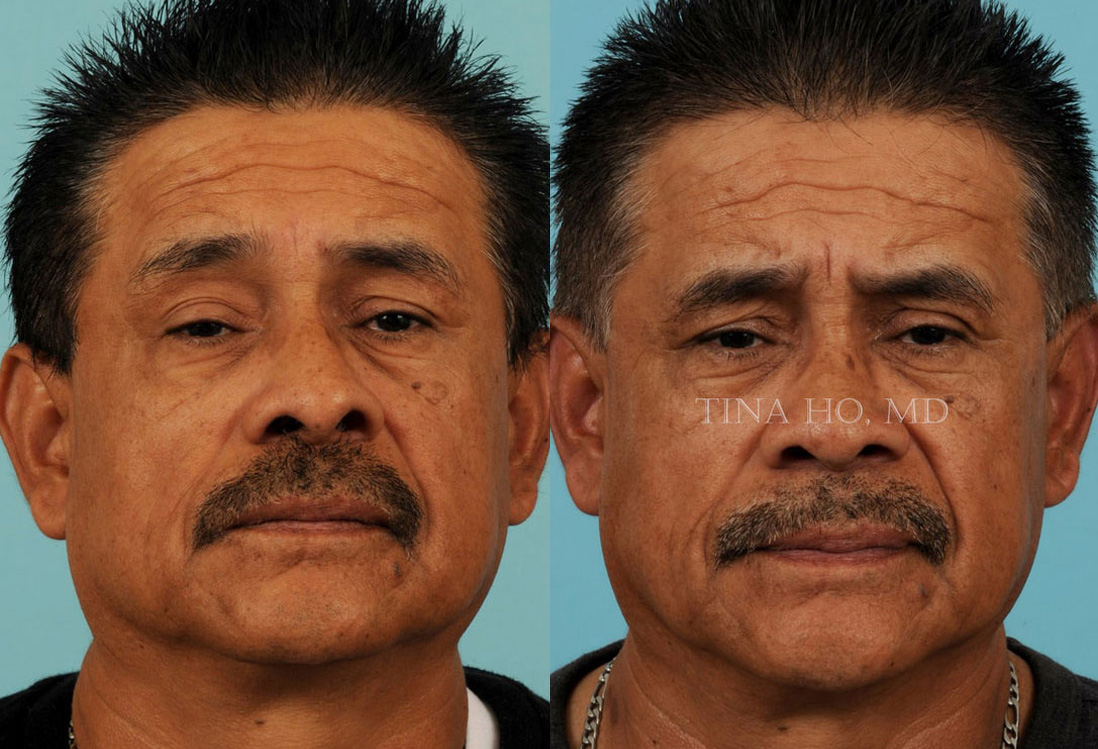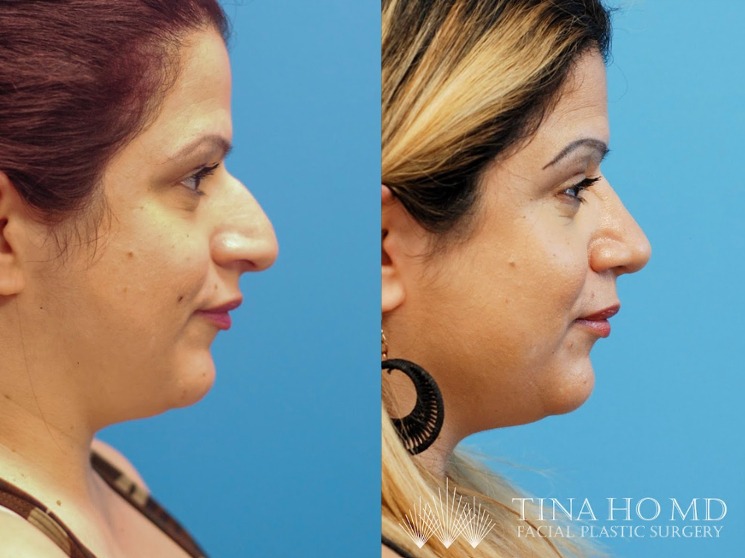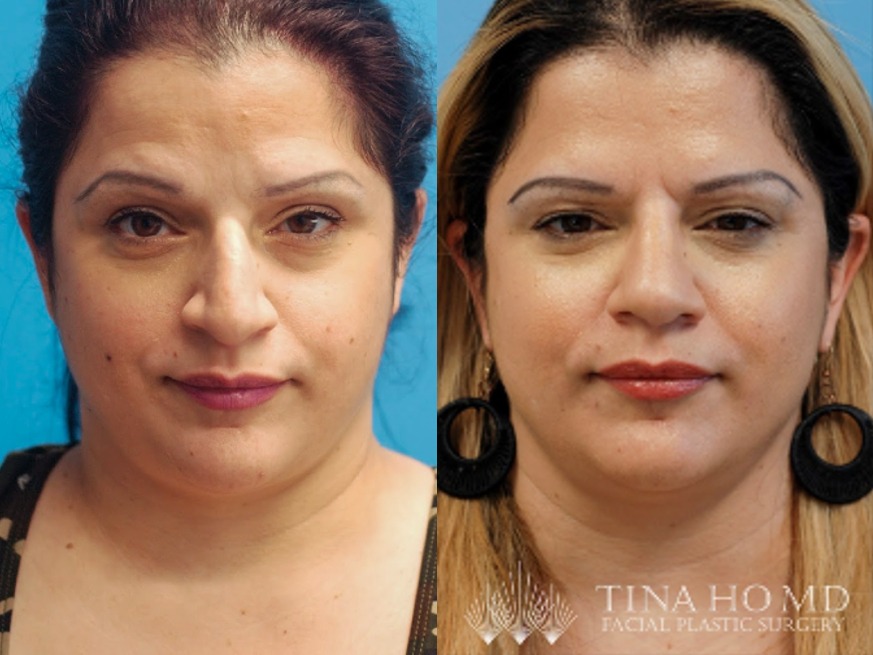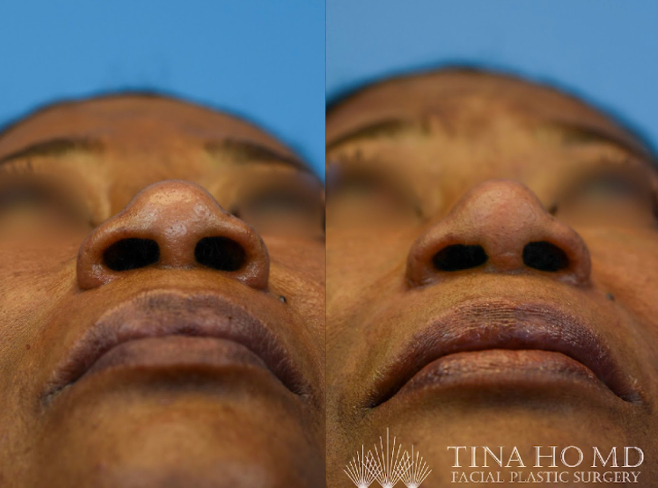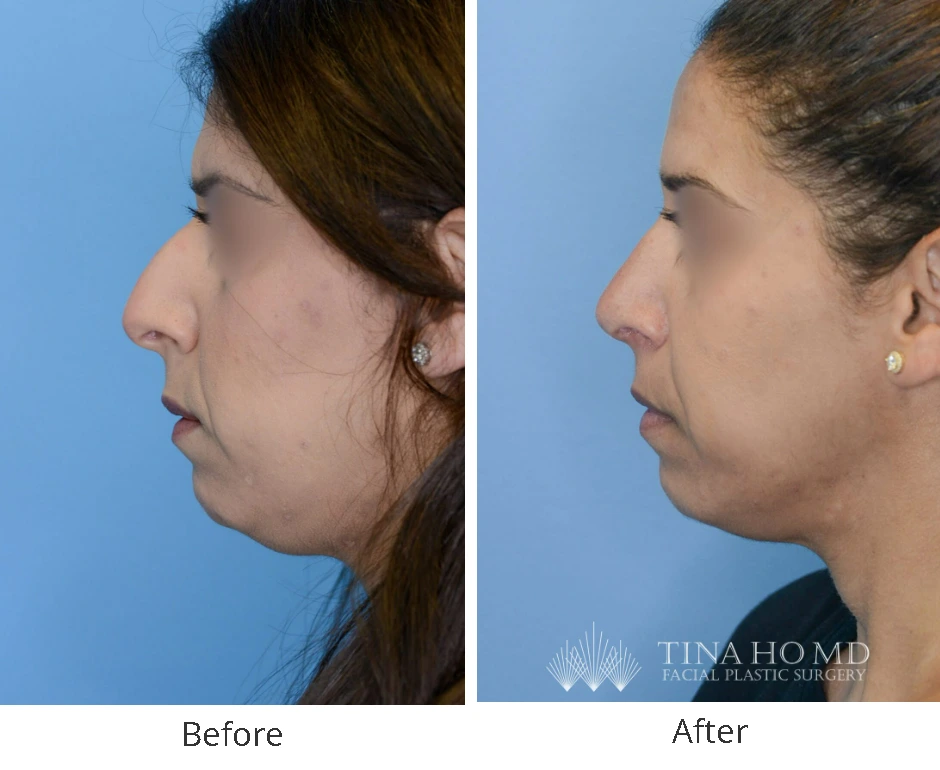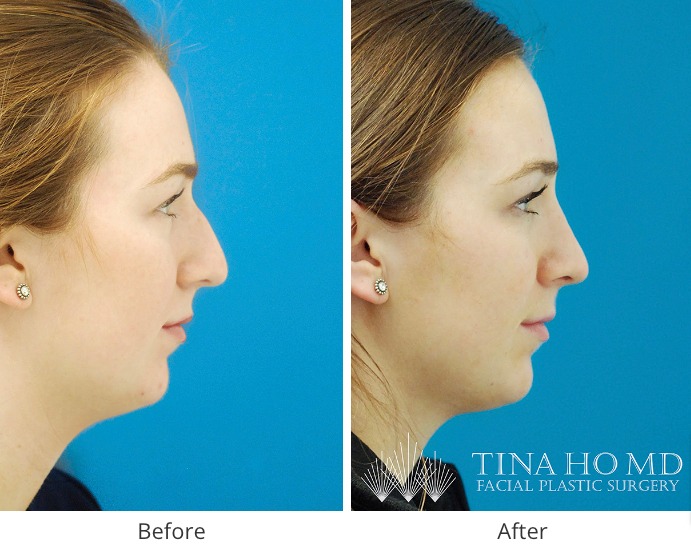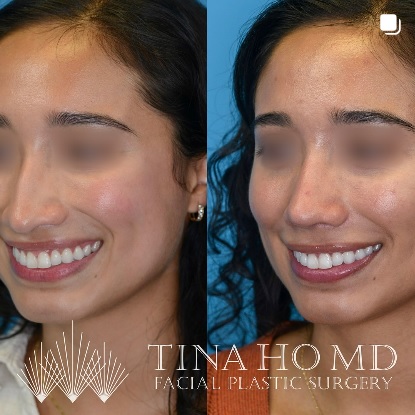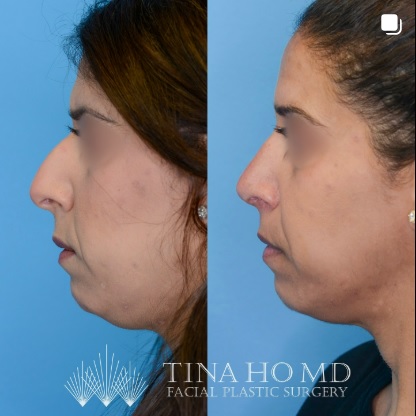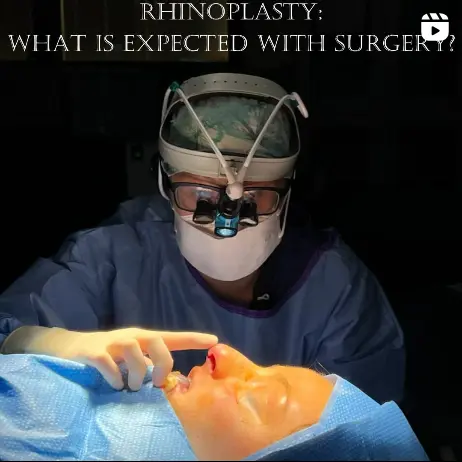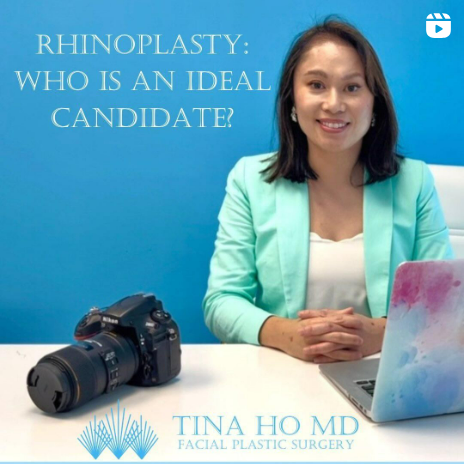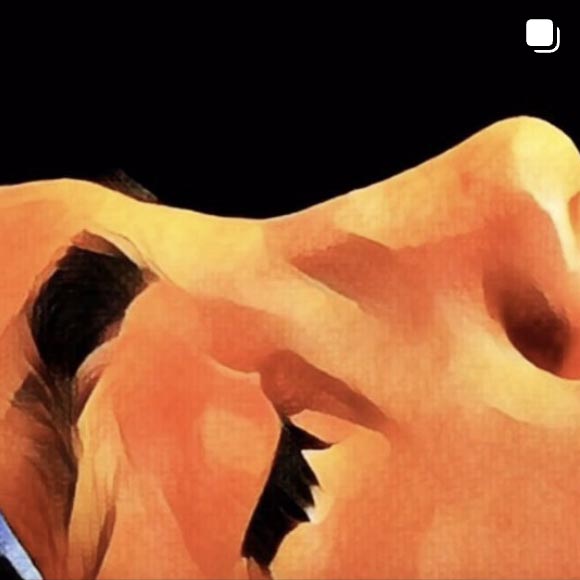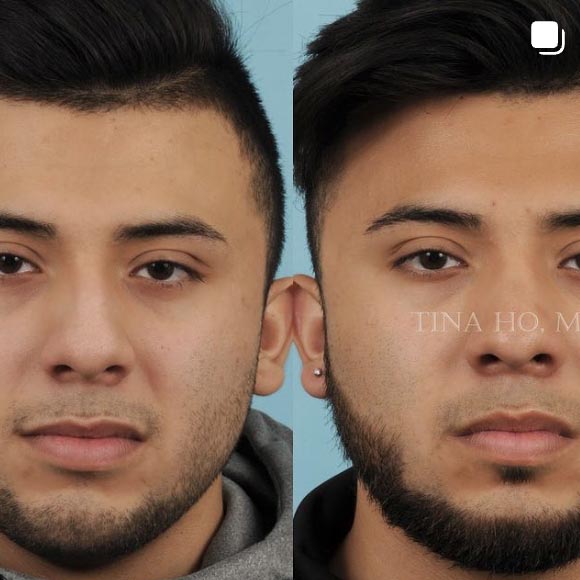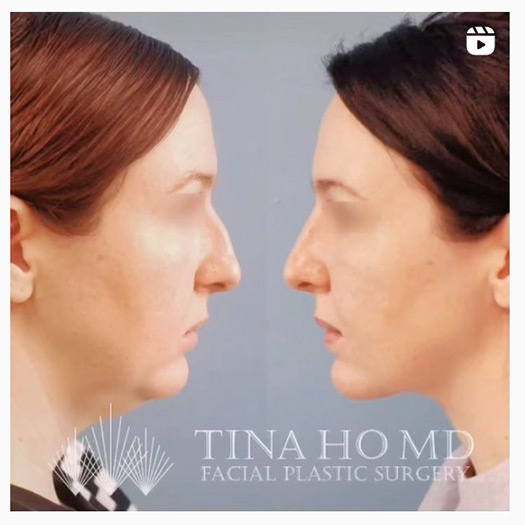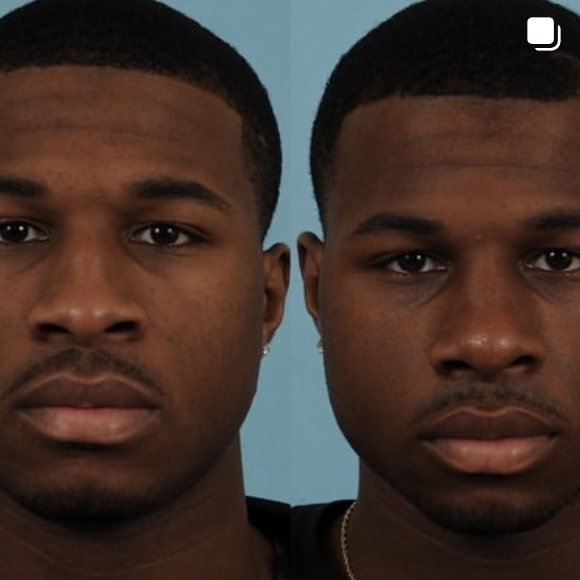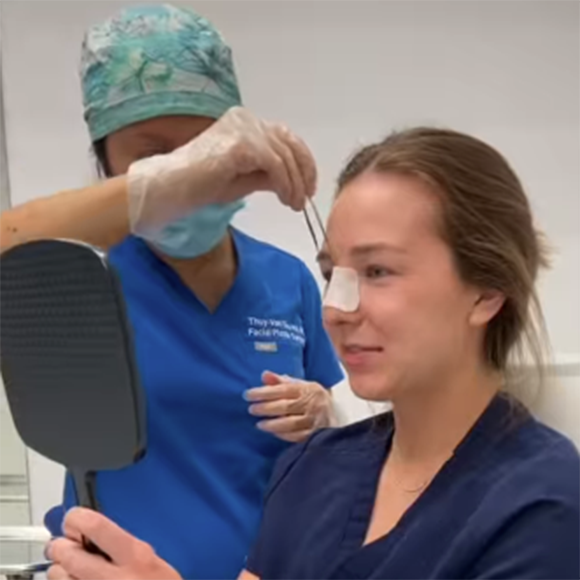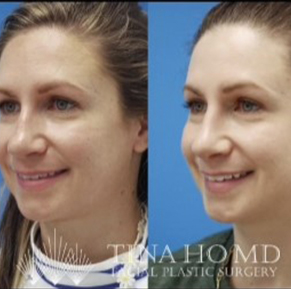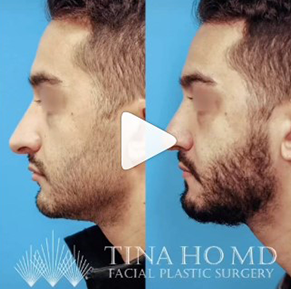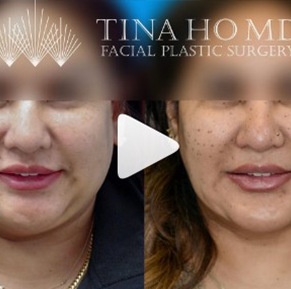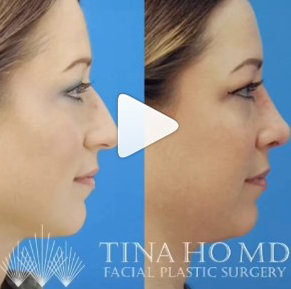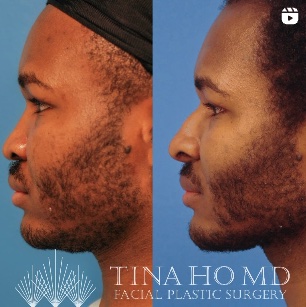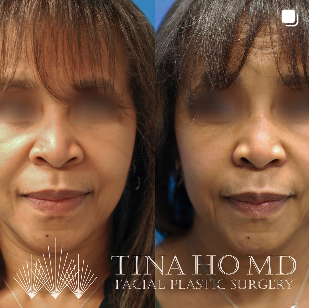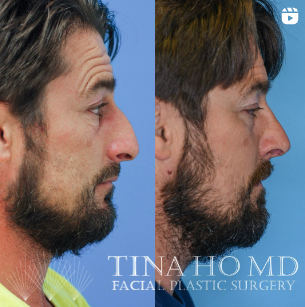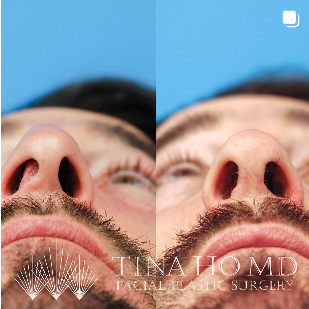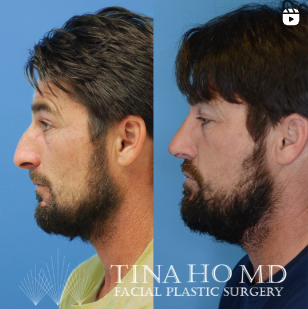Table of Contents
Introduction
to Rhinoplasty
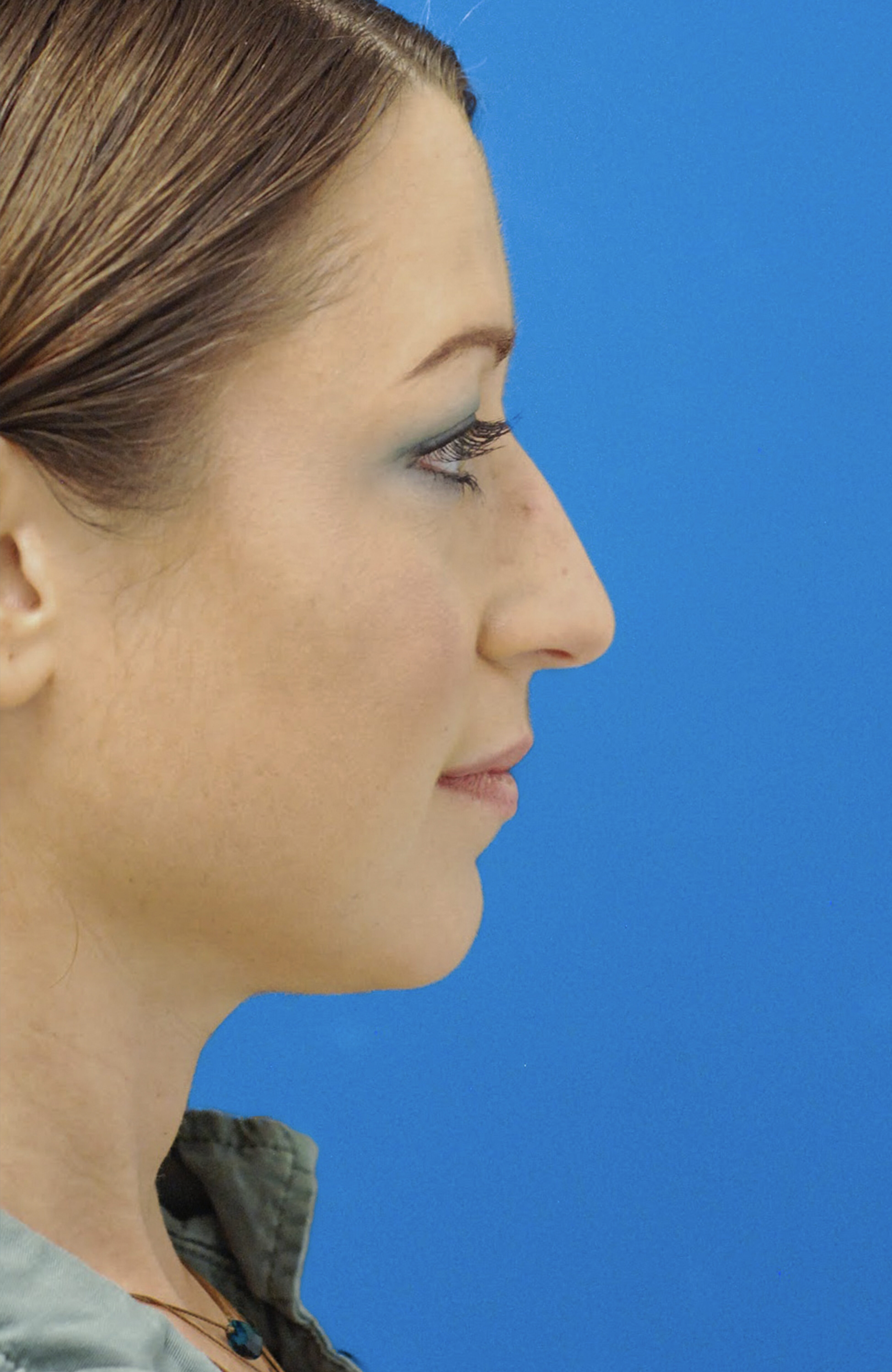
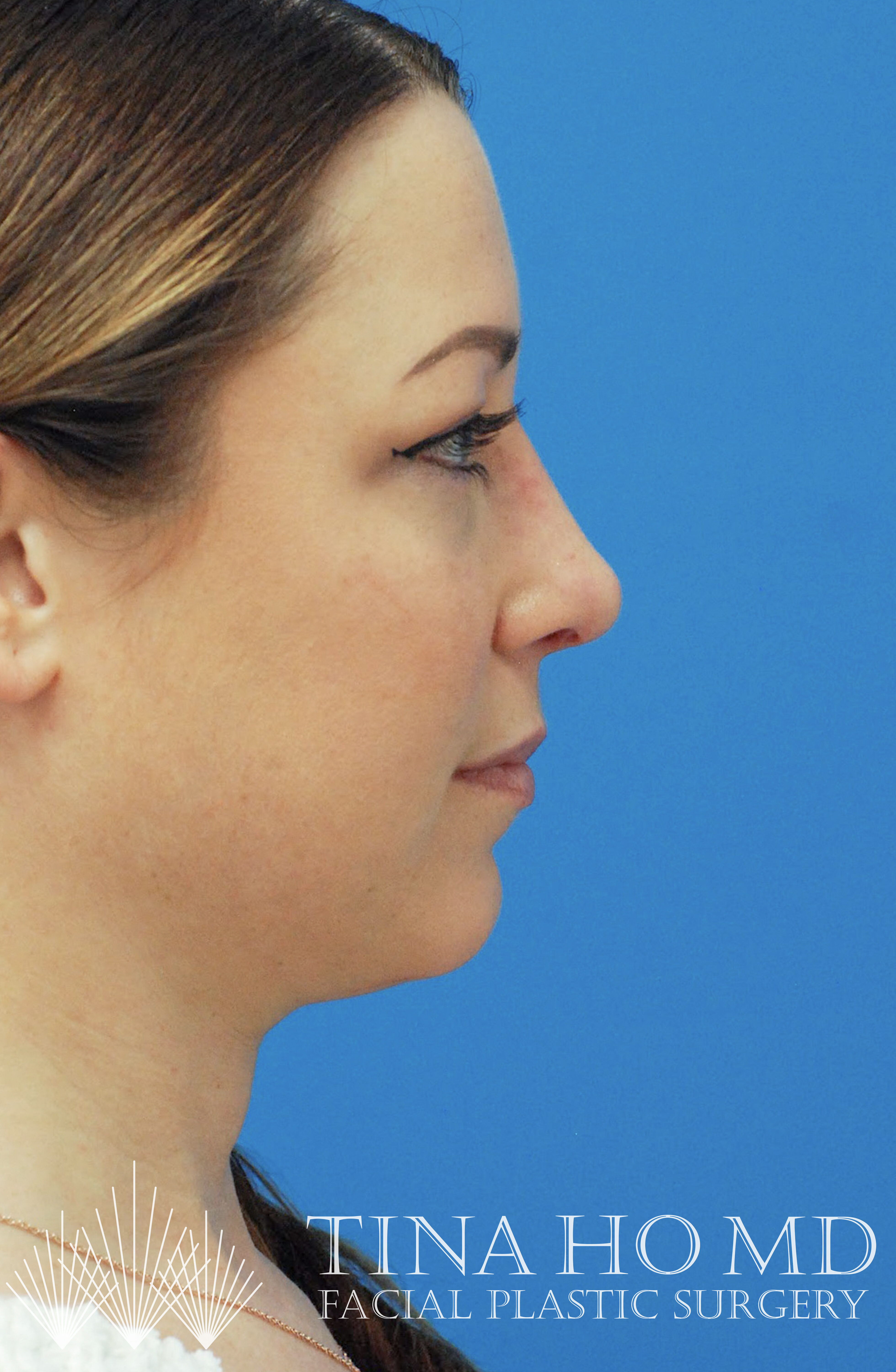
Before & After
Rhinoplasty: Before and Afters
Educational Videos
Why Choose Dr. Tina Ho For Rhinoplasty?
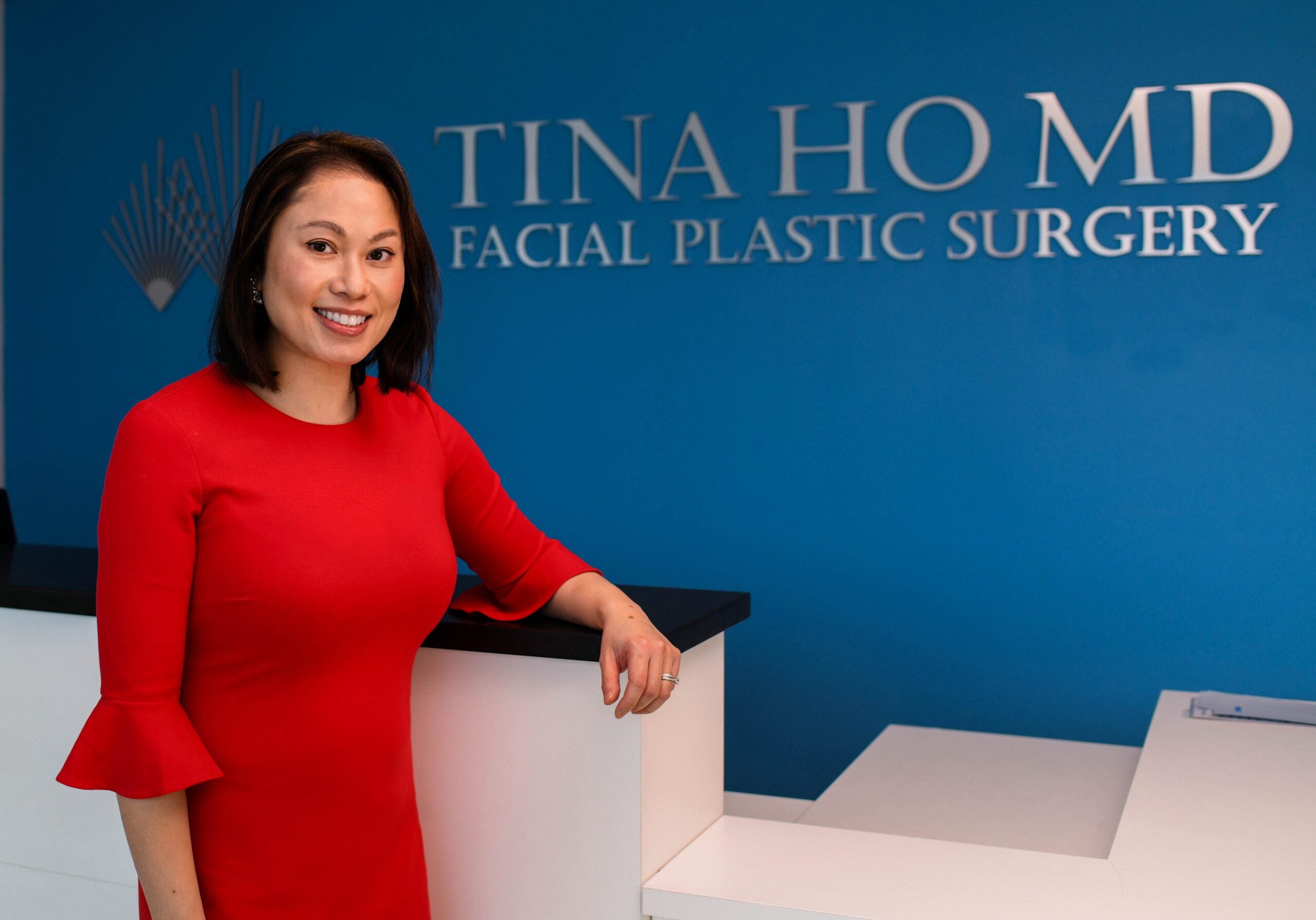
What is Dr. Ho’s Approach to Rhinoplasty?
BEFORE & AFTER PHOTOS
What is the Ideal Nose?

On profile view, the ideal nose may illustrate close to a 3:4:5 proportion, as described by Crumley’s method. The ideal nasolabial angle (angle spanning between the nasal tip and upper lip) is usually 90-95 degrees in men and 95-110 degrees in women.
Dr. Ho believes that while every nose is unique, the ideal nose demonstrates adequate breathing function and natural facial harmony. The length and width of the nose should be proportionate with other facial features according to the rules of the horizontal thirds and vertical fifths of the face, respectively. The ideal nasolabial angle (the angle spanning between the nasal tip and the upper lip) is usually 90 to 95 degrees in men and 95 to 110 degrees in women. The ideal nasofrontal angle (the angle spanning between the forehead and the nasal bridge) is 115 to 130 degrees. In profile, the ideal nose may illustrate close to a 3:4:5 proportion, as described by Crumley’s method. Dr. Ho uses several of these principles as a foundation for her surgical technique as well as her artistic intuition in creating noses that are aesthetically pleasing and harmonious with the rest of the face.
Testimonials
Patient Testimonial Videos
The Rhinoplasty Procedure
Nasal Issues Addressed
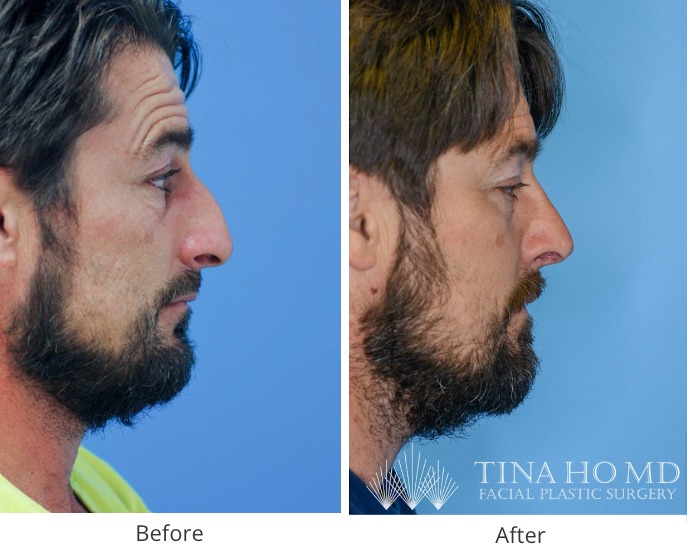
Common nose issues that can be improved or corrected by rhinoplasty include but are not limited to:
- Broken nose
- Crooked nose
- Nasal bridge hump (Dorsal hump)
- Flat nasal bridge
- Bulbous tip
- Drooping nasal tip
- Nostril asymmetry
- Wide or flared nostrils
- Large nose
- Nasal obstruction
- Septal deviation
- Nasal valve collapse
Dr. Ho is experienced in improving all of these issues with rhinoplasty and will discuss with each patient her customized approach for each type of issue.
Enhance Your Recovery With Elixir MD™
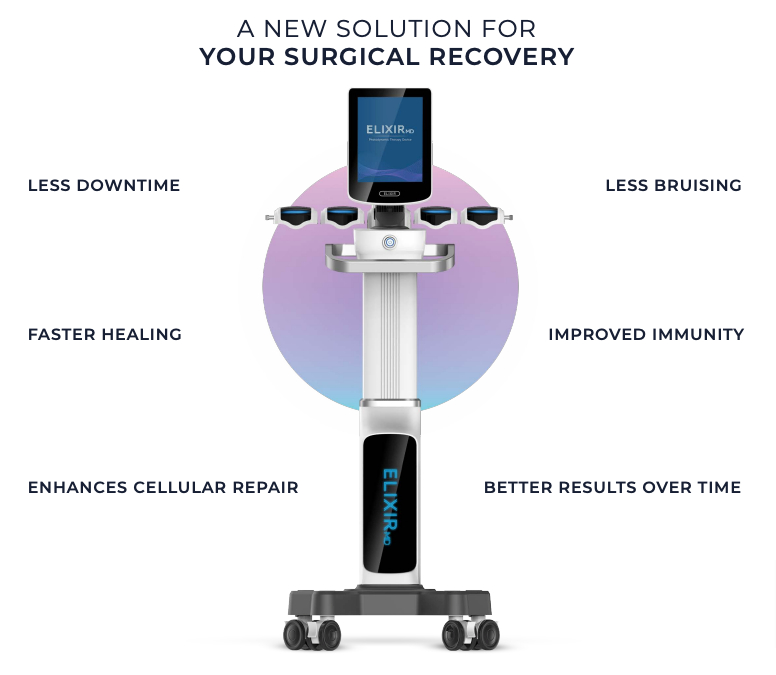
The Elixir MD is an innovative recovery tool that offers various treatment programs using different LED light wavelengths to achieve specific pre and post-surgical goals. These programs are supported by advanced artificial intelligence temperature controls and adjustable settings to address a range of concerns and goals. This non-invasive therapy is safe, painless, and can reduce infections after surgery while also enhancing recovery and minimizing scarring after rhinoplasty surgery.
Benefits of Elixir MDTM
- Enhanced post-operative recovery after rhinoplasty. Using LED light, Elixir MD stimulates the skin to accelerate wound healing and minimize scarring post-surgery.
- Improved healing and cellular repair. Specific wavelengths stimulate collagen and elastin production, which are essential for healing after surgery.
- Easier rhinoplasty recovery. Reduces inflammation responsible for swelling and pain after surgery.
- Improved lymphatic drainage and blood flow. Enhances the delivery of nutrients and removal of waste for optimal healing.
Elixir MDTM Treatment Programs for Rhinoplasty
Elixir Detox™ Treatment
This pre-operative therapy uses blue light to reduce the number of bacteria, oils, and toxins on the skin, reducing surgical complications such as infection.
Elixir Cellular Repair™ Treatment
When initiated immediately after rhinoplasty, Cellular Repair uses yellow light to enhance the circulation in the surgical area resulting in reduced post-operative bruising and swelling, enhanced healing to accelerate healing, and a shortened recovery period after surgery.
Elixir NeoXcell™ Treatment
The NeoXcell™ treatment program combines the benefits of Elixir Cellular and Thermal to boost healing and balance melanin production for a more even skin tone.
Elixir RoXium™ Treatment
RoXium™ combines yellow and blue light to reduce post-operative swelling and bruising, prevent oxidative damage to the skin, decrease sebum production, reduce pore size, and provide a clearer complexion.
Book Now
– Dr. Tina Ho

FAQ’s
What are the differences between Open Rhinoplasty and Closed Rhinoplasty?
What Should Patients Expect After Rhinoplasty?
What Is Primary Rhinoplasty?
What Is Septorhinoplasty (Functional Rhinoplasty)?
What Is the difference between Cosmetic Rhinoplasty and Functional Rhinoplasty?
What Is Ethnic Rhinoplasty?

Patients of non-Caucasian ethnicity often desire rhinoplasty to help improve certain features of their nose. Most patients will seek nasal surgery to enhance the shape of their nose and elegantly restore facial harmony that is still natural and consistent with their ethnicity. Common ethnic nose issues that can be addressed by rhinoplasty include but are not limited to dorsal hump, bulbous tip, flat dorsum, and overprojected nose. Dr. Ho has unique training in ethnic rhinoplasty and has performed surgery on patients of various ethnicities in Philadelphia and Wayne including patients of Asian and African descent. Click here to learn more about ethnic rhinoplasty.
What Is Revision Rhinoplasty?

Revision rhinoplasty is an additional nasal surgery that takes place after a person’s first rhinoplasty procedure. It is typically a corrective procedure. A patient may be a candidate for a revision rhinoplasty if they demonstrate a persistent or new nasal deformity or nasal breathing problem that has not improved after they have fully healed from their initial rhinoplasty procedure. Revision rhinoplasty is often an even more difficult procedure compared to primary rhinoplasty, and revision rhinoplasty patients are at a higher chance of requiring additional nasal procedures in the future. Dr. Ho has extensive training in revision rhinoplasty, including experience in harvesting and using a patient’s own ear and rib cartilage graft material to create a natural, durable nose with a functional and aesthetically pleasing long-term outcome. Click here to learn more about revision rhinoplasty.
What Should I Know About Teenage Rhinoplasty?
What is the Cost of a Nose Job in Philadelphia?
- The average range for nose surgery is $12,000-$20,000, including facility & anesthesia fees.
- The price of rhinoplasty varies per patient, based on the anesthetic, techniques, and extent of work required.
- Revision rhinoplasty can range between $15,000-$25,000 including facility & anesthesia fees. Factors include the extent to which corrections are needed.
Note: functional rhinoplasty may be covered by health insurance. Financing options for nose surgery are available via CareCredit.
Learn More During a Consultation
Book Now

